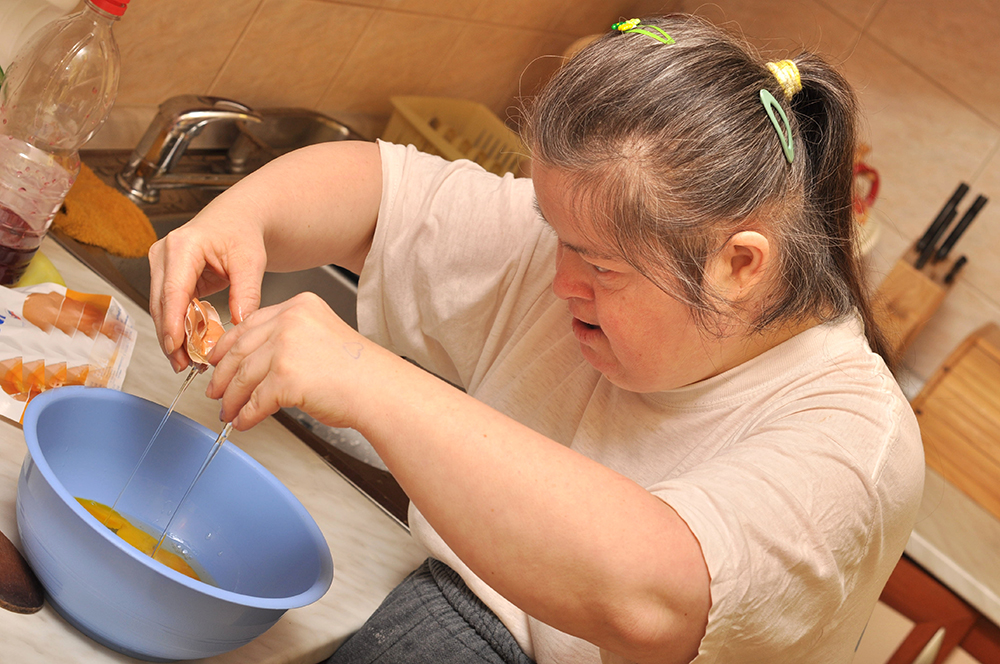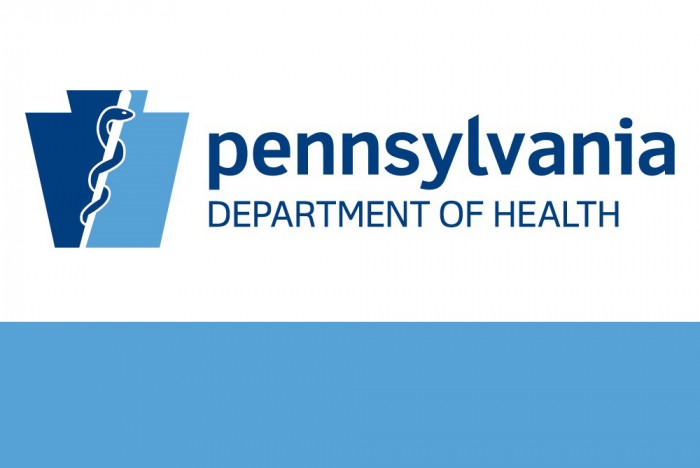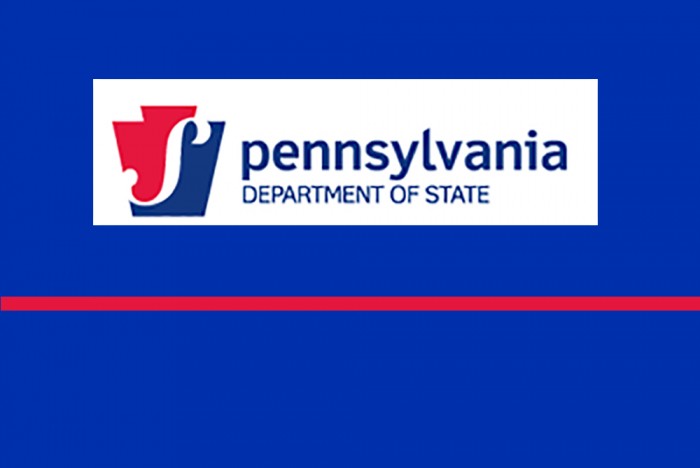DHS Provides Guidance for Parents with Children Returning to Child Care
Providers Must Act by June 3 to Receive Additional Relief Fund General Distribution Payment
FOR IMMEDIATE RELEASE
Contact: HHS Press Office
202-690-6343
media@hhs.gov
The U.S. Department of Health and Human Services (HHS) is reminding eligible providers that they have until tomorrow, June 3, 2020, to accept the Terms and Conditions and submit their revenue information to support receiving an additional payment from the Provider Relief Fund $50 billion General Distribution. All providers who automatically received an additional General Distribution payment prior to 5:00 pm, Friday, April 24th, must provide HHS with an accounting of their annual revenues by submitting tax forms or financial statements. These providers must also agree to the program Terms and Conditions if they wish to keep the funds. Providers who have cases pending before the department for adjudication with regard to eligibility for general distribution funding will not be impacted by this closure. All cases needing individual adjudication will need to be received by HHS no later than June 3, 2020.
The submission of tax forms or financial statements to the portal will also serve as an application for additional funding for those providers that have not already received an additional General Distribution payment. If these providers do not submit their revenue information by June 3, they will no longer be eligible to receive potential additional funding from the $50 billion General Distribution.
President Trump is providing support to healthcare providers fighting the COVID-19 pandemic through the bipartisan CARES Act and the Paycheck Protection Program and Health Care Enhancement Act, which provide $175 billion in relief funds to hospitals and other healthcare providers, including those on the front lines of the coronavirus response. This funding supports healthcare-related expenses or lost revenue attributable to COVID-19 and ensures uninsured Americans can get treatment for COVID-19.
HHS previously announced $50 billion of the Provider Relief Fund was allocated for general distribution to facilities and providers that bill Medicare and were impacted by COVID-19, based on eligible providers’ net patient revenue. To expedite providers getting money as quickly as possible, HHS distributed $30 billion immediately, proportionate to providers’ share of Medicare fee-for-service reimbursements in 2019. Then, beginning on April 24, HHS began distributing an additional $20 billion to providers based on their share of net patient revenue, and began accepting submissions from eligible providers of their financial data. Providers have 45 days from the date they received a payment to attest and accept the Terms and Conditions or return the funds. Providers that do not log into the provider portal and accept the Terms and Conditions after 45 days of receipt will be deemed to have accepted the Terms and Conditions.
Other allocations have included $12 billion for hospitals in COVID-19 high-impact areas, $10 billion for rural providers, and $400 million for tribal healthcare providers. Some providers may receive further, separate funding, including skilled nursing facilities, dentists, and providers that solely take Medicaid. A portion of the Provider Relief Fund is being used to reimburse healthcare providers, generally at Medicare rates, for COVID-related treatment of the uninsured.
Visit hhs.gov/providerrelief for more information.
###
Department of Health Warns of Scam Targeting WIC Recipients
FOR IMMEDIATE RELEASE
June 1, 2020
Harrisburg, PA – The Pennsylvania Department of Health today warned Pennsylvania’s Special Supplemental Nutrition Program for Women, Infants and Children (WIC) participants of potential scams and cautioned them not to disclose their personal information without verifying the identity of the caller.
Although WIC clinics do perform eligibility determinations, they will never call participants to request their bank account information to deposit funds directly into their accounts.
“The WIC program provides access to resources for mothers and children across Pennsylvania and we do not want our WIC participants worried about being taken advantage of – especially during the COVID-19 pandemic,” Sec. of Health Dr. Rachel Levine said. “We want participants to be alert, but know their information is protected and their benefits will continue to be distributed through secure means. Please be aware of potential scammers looking to steal personal information and report their number so more Pennsylvanians do not have this experience.”
If a WIC participant is unsure if a request for information is legitimate they should contact their local WIC office. Due to the COVID-19 pandemic, WIC services will be available over the phone or by virtual appointments until counties reopen into the green phase. Residents can find the address, hours of operation, and contact information for their local WIC clinic here.
Pennsylvanians should report scams to their local law enforcement or file a consumer complaint to the Office of the Attorney General through an online form, by calling 800-441-2555, or by email at scams@attorneygeneral.gov.
The WIC program in Pennsylvania provides services at more than 260 locations and serves more than 205,000 pregnant women, infants and children under age 5. WIC families shop at more than 1,500 Pennsylvania grocery stores and spend $248 million a year with their WIC food benefits. In addition, the program also serves as a gateway for preventive health, and is considered one of the most successful, cost-effective and important nutrition intervention programs in the country.
For more information about WIC, visit www.pawic.com or call 1-800-WIC-WINS. The Pennsylvania WIC program is funded by the United States Department of Agriculture. This institution is an equal opportunity provider.
For information on how WIC clinics may be affected by COVID-19, please visit our fact sheet here.
The Wolf Administration stresses the role Pennsylvanians play in helping to reduce the spread of COVID-19:
- Wash your hands with soap and water for at least 20 seconds or use hand sanitizer if soap and water are not available.
- Cover any coughs or sneezes with your elbow, not your hands.
- Clean surfaces frequently.
- Stay home to avoid spreading COVID-19, especially if you are unwell.
- If you must go out for a life-sustaining reason, please wear a mask.
Updated Coronavirus Links: Press Releases, State Lab Photos, Graphics
- Daily COVID-19 Report
- Press releases regarding coronavirus
- Latest information on the coronavirus
- Photos of the state’s lab in Exton (for download and use)
- Coronavirus and preparedness graphics (located at the bottom of the page)
- Community preparedness and procedures materials
- Map with the number of COVID-19 cases
All Pennsylvania residents are encouraged to sign up for AlertPA, a text notification system for health, weather, and other important alerts like COVID-19 updates from commonwealth agencies. Residents can sign up online at www.ready.pa.gov/BeInformed/Signup-For-Alerts.
MEDIA CONTACT: Nate Wardle, 717-787-1783 or ra-dhpressoffice@pa.gov
# # #
RPCA Telehealth Survey Closes Wednesday, June 3
The RCPA Telehealth Survey will close at end of day on Wednesday, June 3 as we begin our data review process. With your outcomes and feedback we will create an RCPA telehealth white paper position statement supporting our members’ utilization of telehealth on sustained platforms.
The data will also be a critical part of our ongoing efforts with DHS, the BH MCOs, and the work involved with telehealth implementation cross the Commonwealth.
To access the survey, please follow the link to the original RCPA Telehealth Survey Alert below:
If you have questions, please contact your RCPA Policy Director.
Behavioral Health Telehealth Survey for Individuals and Their Families
The Office of Mental Health and Substance Abuse Services is seeking input from individuals and their families who have received behavioral health services, on their experiences with telehealth during COVID19, to guide the future of behavioral health telehealth in Pennsylvania. An online survey is now available through Monday June 22, 2020.
This is a critical piece to the efforts to create a sustained platform for telehealth across the Commonwealth. We urge our RCPA members to facilitate this with your clients/consumers/families so OMHSAS and stakeholders can understand the positive impact the use of telehealth has had on service delivery. It is this information that becomes part of the foundation for the creation of processes and regulations in the future. If you have any questions, please contact your RPCA Policy Director.
Questions regarding the survey or behavioral health telehealth in Pennsylvania can be directed to this email.
Capitolwire: Five-month, Stop-gap PA Budget Sent to Gov. Wolf for His Signature
By Chris Comisac, Bureau Chief, Capitolwire
HARRISBURG (May 28) – Despite a failed attempt by House Democrats to derail the budget approval process, a package of budget bills – including a $25.1 billion General Appropriations bill and legislation to distribute roughly $2.6 billion of federal CARES Act funding – is on its way to the Governor following the completion of Thursday’s session.
The stop-gap Fiscal Year 2020-21 General Appropriations bill, House Bill 2387 – approved on a 44-6 Senate vote – includes, according to House and Senate fiscal notes, approximately $25.1 billion in state General Fund spending, with much of that going towards flat-funding, for a full fiscal year, of early education through higher education, mandated human services programs, state pension plan payments and the Commonwealth’s debt service.
Other government operations, however, are funded at the same level as the current fiscal year for five months, which will require lawmakers and the Governor during the next few months to figure out how to pay for the other seven months of 2020-21, along with any additional spending they might want or need to do in excess of the flat funding already approved.
In addition to that, they’ll need to develop a way to address what could be around a currently estimated $1.3 billion to $1.5 billion shortfall that has been projected by the state Independent Fiscal Office for the current 2019-20 fiscal year, though that figure remains in flux given the current fiscal uncertainties for the state and nation due to the COVID-19 outbreak.
“The revenues to support budgetary spending decisions are primarily based on historical trends and experience,” said Senate Appropriations Committee Majority Chairman Pat Browne, R-Lehigh, prior to the HB2387 final vote early Thursday. “So with current condition well outside of anticipation, and well outside prior experience, and the dramatic uncertainty of what it may lead to in the near future, the most pertinent question must ponder and must effectively answer is ‘Can we confidently proceed consistent with past budgetary actions in developing our spending plans, and if not, how do we proceed to ensure the most accurate and responsible financial path for the commonwealth over the next fiscal cycle?’”
“Considering all relevant circumstance in front of us, Pennsylvania’s current dire economic conditions, the lack of clarity as to when and how these conditions will adjust and hopefully improve during the next fiscal cycle, and the mounting revenue losses we are currently realizing, it is my sincere opinion – which I’m confident I share with the Governor’s Budget Secretary and my appropriations colleagues in the House – that our fiscal line of sight currently and unfortunately does not extend through June 30, 2021,” Browne explained. “Accordingly, it would not be responsible fiscal policy on behalf of the taxpaying citizens of this commonwealth to advance and enact, consistent with usual practice, a complete Fiscal Year 2020-21 spending plan at this time.”
Browne went on to say that a five-month spending plan, with the aforementioned full-year funding for several important budget components, “is within our line of sight,” and it will serve as “a financial bridge that is sturdy enough to advance and provide for the needs of our citizens, reliable enough to weather the turbulent currents of financial uncertainty flowing beneath it, and reinforced enough to accommodate the long-term expectations of outside public markets.”
“It will provide sufficient resources to meet the commonwealth’s important obligations while securing adequate time to ascertain the commonwealth’s complete financial landscape through the third quarter of 2020,” Browne said.
Browne’s Democratic counterpart concurred with that assessment of HB2387, arguing a “unprecedented response” to the current fiscal situation is necessary.
Saying he was proud to have worked with Browne and others on the bill, Senate Appropriations Committee Minority Chairman Vince Hughes, D-Philadelphia, prior to the final Senate vote said, “I think this is the appropriate decision at this time.”
And to those who have voiced opposition to the legislation, Hughes asked, “What’s your plan?”
Acknowledging that items within the stop-gap FY2020-21 budget (HB2387) are funded at the same level as the current fiscal year, he also noted that nothing prevents state lawmakers from appropriating more money for things when they revisit the budget to provide for the final seven months of FY2020-21.
Some of those who have voted against the bill, both on Thursday in the Senate and on Tuesday in the House, raised concerns about the amount of funding provided within the budget for education or education-related items.
Reacting to HB2387’s approval, the state’s largest teachers union – the Pennsylvania State Education Association (PSEA) – said the bill reinforces that “education funding is a top priority and helps provide stability for school districts at a difficult time.”
“Gov. Wolf and the Legislature continue to make public education a top priority even as our schools face unprecedented challenges in the wake of the COVID-19 pandemic,” said PSEA president Rich Askey. “This commitment from our state leaders will help districts keep educators and support staff on the job meeting the needs of students when schools reopen and keeping everyone in them learning, healthy, and safe.”
The Senate also sent to the Governor the budget’s preferred (for various state government agencies, bureaus and offices) and non-preferred (for Pennsylvania’s state-related universities) appropriations bills, while sending to the House other bills – most of them code bills – that further implement the state budget. By early Thursday evening, the House had approved those measures, sending them to the Governor’s desk, all for his expected approval.
Additionally, lawmakers approved Senate Bill 1108, which was amended on Thursday in the House of Representatives to appropriate a substantial portion of the $3.9 billion in federal CARES Act dollars appropriated to Pennsylvania.
According to a fiscal note prepared by the House Appropriations Committee, the approximately $2.6 billion will be distributed to the following state agencies (with the money in parentheses): Pennsylvania Commission on Crime and Delinquency ($150 million); Department of Agriculture ($40 million); Department of Community and Economic Development ($930 million); Department of Education ($9 million); State System of Higher Education ($30 million); Pennsylvania Higher Education Assistance Agency ($42.2 million); Department of Health ($20 million); Department of Human Services ($1.106 billion); Pennsylvania Emergency Management Agency ($100 million); and the Pennsylvania Housing Finance Agency ($175 million), for mortgage and rental assistance. The remaining $1.3 billion is put into a restricted revenue account – the COVID-19 Response Restricted Account – which legislative leaders said could be used at a later date to address additional virus-related costs.
As for more specifics about where that money will go once it gets to the state agencies, House documents suggest $625 million of the $930 million allotted to the Department of Community and Economic Development (DCED) will go to the 60 Pennsylvania counties that didn’t directly receive funding from the federal government (Allegheny, Bucks, Chester, Delaware, Lancaster, Montgomery and Philadelphia counties got dollars directly) with the distribution to be through a population-based formula, meaning counties with larger populations, with York County being the largest of the remaining counties, get a larger portion of the overall distribution. York County’s share would be roughly $40.5 million, while the smallest Pennsylvania counties – Cameron, Sullivan and Forest counties, each with populations below 10,000 – would receive the minimum amount of $1 million.
Another $225 million of DCED funding will be for the agency’s Statewide Small Business Assistance Program, while $50 million of the allotment will be for hazard pay, $20 million will be for the state’s Cultural and Museum Preservation Grant Program, and $10 million will be for the agency’s Food Access Initiative.
Of the Pennsylvania Higher Education Assistance Agency’s $42.2 million allotment, $30 million will be for grants to students, with the other $12.2 million for institutional assistance grants ($5 million), higher education for the disadvantaged ($5 million) and student loan interest forbearance ($2.2 million). The Education Department will also drive out $7 million to the Pre-K Counts Program and $2 million to the Head Start Program. Also, education-related is the $150 million allotted to the Pennsylvania Commission on Crime and Delinquency, with those funds to be transferred to the School Safety and Security Fund.
There will be $10 million for vaccine research out of the Health Department’s $20 million allotment, with the other $10 million going to community-based health care centers.
Agriculture’s $40 million will be evenly split between its State Food Purchase Program and its Dairy Assistance Program.
And, during previous weeks, lawmakers have approved bills containing CARES Act distributions for Pennsylvania long-term care services used by both the state’s elderly and disabled populations, as well as the state’s first responders.
SB1108 incorporates much of the same items that have been in those other bills, earmarking from the Department of Human Services’ $1.106 billion allotment $632 million for long-term living programs (nursing homes get $245 million, personal assistance services get $140 million, assisted living facilities and personal care homes get $50 million, adult day services get $13 million, residential habilitation gets $1 million and ventilator services get $8 million); $260 million for the state’s Intellectual Disabilities Community Waiver Program; $50 million for the state’s Community Health Choices Program; and $10 million for the Long-term Care Managed Care Program. Additionally, from DHS’ funds, another $10 million will go for critical access care hospitals, there will be $10 million for domestic violence programs, $10 million for homeless assistance services, and, with an eye on ensuring parents can return to work, $116 million will be dedicated to child care.
Another $50 million will be made available from the Pennsylvania Emergency Management Agency’s allotment, for grants to Pennsylvania’s fire and EMS service providers; the other $50 million in PEMA funds are to replace special funds that would have provided dollars for health care system assistance.
The two chambers on Thursday also approved House Bill 2510, a Fiscal Code bill accompanying the state budget to implement appropriations, that will implement $2.1 billion of the appropriations within SB1108. HB2510 also has the state Department of Human Services create regional health collaboratives, within six regions of the state as defined by the department, with the health collaboratives focused on protecting residents in long-term care facilities from COVID-19; the regional health collaboratives program will receive $175 million from the $632 million set aside for nursing homes, long-term care, and personal care.
Additionally, HB2510 requires any appropriated funding that remains unspent by Dec. 1, 2020, to be redistributed through the County Block Grant program. The remainder of the $2.6 billion in CARES Act funding is implemented in other budget-accompanying bills that were sent to the Governor Thursday.
Likewise sent to the Governor on Thursday was the budget’s Public School Code, House Bill 1210, which implements one of SB1108’s appropriations, as well as many of the education-related appropriations within the General Appropriations bill (HB2387).
With regard to the SB1108 appropriation, HB1210 directs roughly $215 million to school districts to help pay for costs associated with protecting children, cleaning buildings and modifying structures in response to the COVID-19 pandemic: $150 million in federal dollars for the School Safety and Security Fund, to which another $49.8 million in federal dollars will be transferred out of the General Fund budget (with that $49.8 million transfer implemented by a second Fiscal Code bill, House Bill 1083). Another $7.5 million will be used for community violence prevention grants, while another $7.5 million will be available for intermediate units to address COVID-19 issues.
As for the other education subsidies from the General Fund contained within HB1210, the total distribution is nearly $7.9 billion: Basic Education Funding for general operating purposes ($6,255,079,000); Special Education Funding for school districts ($1,097,136,000), Community Colleges ($243,855,000); Special Education Funding – Intermediate Unit Set Aside ($65,275,000); and the Public Library Subsidy ($24,779,000).
Another Fiscal Code bill, House Bill 1083, does the catch-all appropriation implementation that the normal budget-related Fiscal Code bill does.
However, it does contain a new provision to address an issue that was raised by some earlier this week regarding the state’s Property Tax Relief Fund and whether it would have enough gambling-generated receipts to cover what’s normally needed annually to provide school property tax reductions to Pennsylvanians.
According to HB1083, in the event of insufficient revenue to provide for $621 million of statewide property tax relief, the bill authorizes the state Budget Secretary to transfer up to $300 million from the COVID-19 Response Restricted Account to the Property Tax Relief Fund.
Some House members who voted against HB2387 on Tuesday, when HB1083’s provision did not yet exist within the legislation, argued that without a way to backfill the Property Tax Relief Fund, a $300 million property tax hike would be coming for Pennsylvania taxpayers should the fund not have enough money to cover its normal tax relief payments.
Additionally, Senate Bill 1112, headed to the Governor, creates the COVID-19 Crisis Fire Company and Emergency Medical Services Grant Program, to which $50 million was appropriated by SB1108. The program would provide grants to all companies that received funding through the Fire Company Grant Program and Emergency Medical Services Grant Program in the latest round of funding, which was announced in January. Companies that received a grant will automatically receive the additional money, while companies that did not receive a grant will need to submit an application to the Pennsylvania Emergency Management Agency.
Earlier on Thursday afternoon, House Democrats unsuccessfully attempted to adjourn the House until June 8 to, they said, allow the chamber to work on and implement additional COVID-19 safety rules, which they claimed are needed after they weren’t informed by the House Republican Caucus about a GOP Caucus member testing positive for COVID-19. The issue first arose on Wednesday, and it delayed House action until the early evening.
Following the histrionics by Democratic House members and their leaders and before his caucus defeated the Democratic adjournment effort, House Majority Leader Bryan Cutler, R-Lancaster, argued the guidance in place by both the federal Centers for Disease Control, as well as orders issued by the state Health Department, were followed to the letter by the House Republican Caucus.
Editor’s Note: Later on Thursday evening, House Speaker Mike Turzai, R-Allegheny, announced the House majority and minority caucuses would begin working together to develop policies to respond to COVID-19 that would be followed by all within the state House of Representatives, as opposed to the current situation in which each caucus has their own response policies that they employ.
-30-
Brain Injury Survey on Telehealth Services
As the State of Pennsylvania transitions through the various stages associated with COVID-19 (Red to yellow and yellow to green), the state will also begin to make a transition from full telehealth services to starting to phase in some face-to-face services. RCPA recently participated in a conference call with staff from the Office of Long-Term Living (OLTL) to provide our feedback on how to begin this transition, things to consider as we transition, etc. One concept we discussed is using a person-centered approach, as individuals differ in their readiness to resume face-to-face or group activities and in their ability to benefit from either treatment modality. They are specifically interested in your input on how this process has gone, what worked, what didn’t work, etc. In order to obtain your feedback, we created a Survey Monkey for you to complete. Your input will help shape how telehealth will look now and in the future. We need to have this feedback provided to OLTL by early next week as they want to use this to help draft their guidance to providers. Surveys should be completed by close of business on Monday, June 1, 2020.
DHS Reminds Pennsylvanians of Assistance Programs, Support Outlets Available to Help Ease COVID-19 Recovery Period
PA Offers Accessible Write-In Ballots for Voters with Disabilities for June 2 Primary
FOR IMMEDIATE RELEASE
May 28, 2020
Harrisburg, PA – Secretary of State Kathy Boockvar announced today that the Department of State will provide accessible write-in ballots to voters with disabilities who request one.
“These ballots will allow blind and low-vision voters to vote privately and independently in Tuesday’s primary,” Secretary Boockvar said. “We are committed to increasing accessibility for voters with disabilities and implementing a long-term solution for accessible ballots for the November election and beyond.”
U.S. District Court Judge Jennifer P. Wilson issued an order on Wednesday mandating that the department offer an accessible write-in primary ballot for voters with disabilities who request one.
To obtain an accessible write-in ballot, an individual must:
- Be an eligible Pennsylvania voter who applied for an absentee or mail-in ballot by the May 26, 2020, deadline and has not yet submitted their voted ballot.
- Submit an email request to ra-awib@pa.gov for the accessible write-in ballot by 8 p.m. on May 29, 2020. Include in the email the voter’s full name, date of birth and address where registered.
- Complete an accessible declaration electronically sent to them by the department and authenticate the declaration with a valid Pennsylvania driver’s license, a valid Pennsylvania state personal identification number or the last four digits of the voter’s Social Security number.
The department will electronically transmit via email to the requesting voter: (1) an accessible write-in ballot; (2) an accessible declaration form; (3) accessible instructions; (4) an accessible candidate list for the voter’s election district; and (5) a write-in envelope.
Using their screen reader software, voters with disabilities can then vote in the privacy of their own homes, print their voted ballot and return it to their county elections office. Their county must receive their voted ballot by 8 p.m. on June 2. A postmark is not sufficient.
MEDIA CONTACT: Wanda Murren, 717-783-1621
















